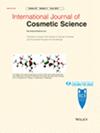The ALT-SPF ring study – in vitro determination of the SPF & UVA-PF by the fused method
Abstract
Objective
In the framework of the Alt-SPF consortium, a large ring study was conducted to evaluate different alternative methods for SPF determination. This paper reports and discusses the results of a new in vitro approach, the Fused Method. The study aimed to determine whether the Fused Method would provide similar SPF results to those obtained using ISO 24444 and whether UVA-PF would be comparable to ISO 24443.
Methods
The Fused Method is based on assessing UV transmittance through a film of sunscreen applied to PMMA plates, before and after 1MED irradiation through the film. An individual calibration curve is measured by each operator using standard sunscreens to correct for individual/equipment error throughout the process. This calibration is formulation-dependent: there is one calibration for emulsion, one for single-phase formulations, and one for mineral UV filters.
Results
Optimization of the calibration step to an asymptotic regression model improved inter-laboratory reproducibility and showed lower method bias compared to ISO 24444. Most PGs met the full statistical validation criterion for SPF results. The results of PG1 (low viscosity emulsion SPF30), PG2 (medium viscosity emulsion SPF6) and PG4 (medium viscosity emulsion SPF30) indicate a product and product group-specific method bias. This observation was confirmed for PG1 in the follow-up study. The same conclusion could be drawn for the evaluation of UVA-PF versus ISO 24443, as this parameter is directly linked to the SPF results.
Conclusion
The use of the Fused Method to determine the SPF of sunscreen formulations meets the statistical criteria for most PGs. However, intra-laboratory reproducibility needs to be improved for low SPF values and low viscosity emulsions. Nevertheless, this fast, simple, and cost-effective method remains a good alternative for SPF & UVA-PF screening in the development of sunscreen formulations. It is a pragmatic approach to manage the various known biases (applicator/device) of in vitro transmittance SPF measurement. No significant change to ISO 24443 is required, and the method allows in vitro SPF & UVA-PF to be determined in the same setup.


 求助内容:
求助内容: 应助结果提醒方式:
应助结果提醒方式:


